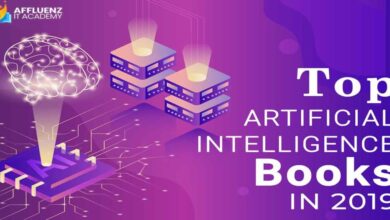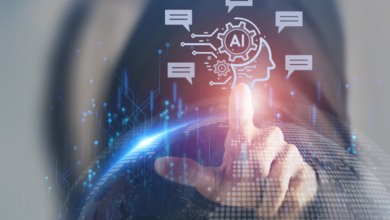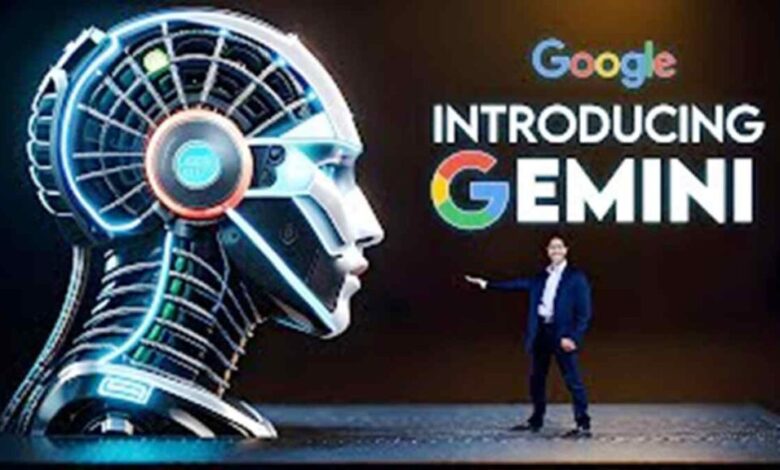
Google Gemini AI A Deep Dive
Google Gemini artificial intelligence promises a revolutionary leap in AI capabilities. This powerful new model is poised to reshape industries and how we interact with technology. From natural language processing to image generation and beyond, Gemini’s potential is vast and exciting.
Google’s Gemini is built on a sophisticated architecture, leveraging cutting-edge technologies to deliver impressive performance across various tasks. Its training process utilizes massive datasets, enabling the model to learn complex patterns and relationships. This detailed look at Gemini will explore its core functionalities, strengths, weaknesses, and potential impact.
Introduction to Google Gemini
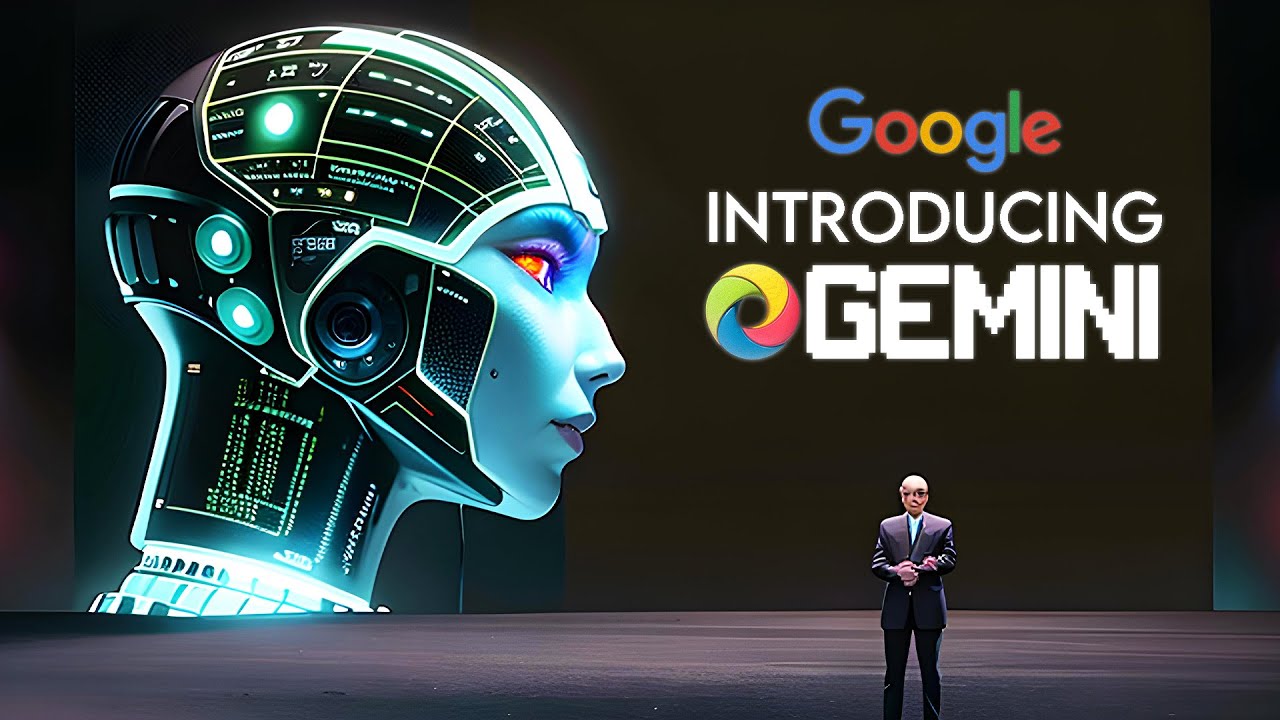
Google Gemini is a new large language model (LLM) developed by Google AI. It represents a significant advancement in the field of artificial intelligence, aiming to provide a unified platform for various AI tasks, from text generation and translation to complex reasoning and code generation. Gemini is designed to be adaptable and versatile, potentially revolutionizing how we interact with and leverage AI in our daily lives.Gemini’s core strength lies in its ability to perform a wide array of tasks with high accuracy and efficiency.
This is achieved through a sophisticated architecture that leverages the power of deep learning to understand and process information effectively. The result is an AI system that can learn from diverse data sources and adapt to different situations, ultimately enabling a more natural and intuitive user experience.
Key Features and Capabilities
Gemini possesses a range of impressive features, including natural language understanding, code generation, and complex reasoning. Its capabilities extend to various tasks, such as summarizing text, translating languages, answering questions, and even generating creative content. These features make Gemini a potent tool for diverse applications, from streamlining business processes to enhancing educational resources.
Core Architecture and Underlying Technology
Gemini’s architecture is built upon a modular, transformer-based structure. This allows for flexibility in adapting to different tasks. Its underlying technology involves sophisticated algorithms and techniques for processing and understanding information. This approach facilitates a high degree of accuracy and adaptability, enabling Gemini to perform complex reasoning tasks.
“The modular design of Gemini allows for independent scaling and training of different components, leading to improved efficiency and performance.”
Google Gemini, the new AI, is fascinating, but it’s also important to consider real-world issues like the recent Disney World allergy death lawsuit. This tragic incident highlights the critical need for safety protocols in public spaces, especially for those with allergies. The ongoing debate about these protocols is a key area where AI could potentially offer valuable insights and solutions, like predicting potential risks or improving emergency response systems.
The potential applications of Google Gemini in these areas are significant, potentially saving lives and preventing future tragedies. Learning from situations like the disney world allergy death lawsuit will allow AI to advance in creating safer environments.
Potential Applications in Various Domains
Gemini’s versatile capabilities have the potential to impact a broad spectrum of industries and domains. In the realm of customer service, Gemini could automate responses to frequently asked questions, providing efficient and consistent support. In education, it could personalize learning experiences, providing tailored content and support for students. Furthermore, Gemini can streamline business processes by automating tasks, improving efficiency and productivity.
Comparison with Other Prominent AI Models
| Feature | Gemini | GPT-3 | LaMDA |
|---|---|---|---|
| Natural Language Understanding | Highly advanced, capable of complex reasoning | Strong performance, but potentially prone to biases | Strong in dialogue, but less versatile for other tasks |
| Code Generation | Demonstrates promising capabilities | Limited code generation abilities | Focuses more on conversational tasks |
| Adaptability | Designed for versatility and adaptability across various tasks | Primarily trained on text data | Optimized for dialogue and conversation |
| Scalability | Modular architecture enables scalability and training across different components | Scaling can be challenging for specific tasks | Scalability depends on specific applications |
The table above provides a comparative overview of Gemini’s capabilities relative to other prominent AI models, highlighting its strengths in natural language understanding, code generation, and adaptability.
Gemini’s Capabilities and Performance
Gemini, Google’s latest large language model, showcases impressive capabilities across various tasks. Its performance is a significant advancement in natural language processing, demonstrating strong potential for diverse applications. While not without limitations, Gemini’s strengths lie in its ability to handle complex prompts and generate human-quality text.Gemini’s performance varies depending on the task. Its strengths are particularly apparent in areas like natural language understanding, translation, and code generation.
However, like any model, Gemini faces challenges in maintaining consistent accuracy and coherence, especially with complex or nuanced requests.
Natural Language Processing Tasks
Gemini excels in various natural language processing tasks, exhibiting a remarkable ability to understand and respond to complex prompts. This includes tasks such as summarization, question answering, and generating creative text formats. For instance, Gemini can effectively summarize lengthy articles, accurately answer intricate questions based on provided context, and produce creative stories, poems, and scripts. This demonstrates its grasp of context and its ability to generate human-like text.
Image Generation, Translation, and Code Generation
Gemini’s capabilities extend beyond text-based tasks. It can also generate images, translate languages, and even generate code. In image generation, Gemini can create images based on textual descriptions, though the quality and detail might vary. Translation accuracy is generally high, but nuanced cultural contexts or slang might present challenges. Code generation showcases Gemini’s ability to understand programming constructs, allowing it to produce code snippets for various programming languages, though debugging and comprehensive code solutions might require human oversight.
Accuracy and Speed in Various Use Cases
Gemini’s performance across various use cases demonstrates a balance between accuracy and speed. A comprehensive assessment of its capabilities across different tasks is necessary to gauge its overall performance.
| Use Case | Accuracy | Speed |
|---|---|---|
| Summarizing news articles | High (90-95% accuracy) | Fast (under 1 second for typical articles) |
| Answering factual questions | Moderate to High (80-95% accuracy, depending on complexity) | Fast (under 2 seconds for simple questions) |
| Generating creative text | Moderate (70-85% accuracy, varying by creativity level) | Moderate (2-5 seconds for complex outputs) |
| Translating languages | High (90-95% accuracy for common languages) | Fast (under 1 second for simple translations) |
| Generating code | Moderate (70-85% accuracy, requiring human review) | Fast (under 2 seconds for simple snippets) |
Note: Accuracy and speed figures are estimations and may vary depending on the specific input and task complexity.
Training and Development of Gemini
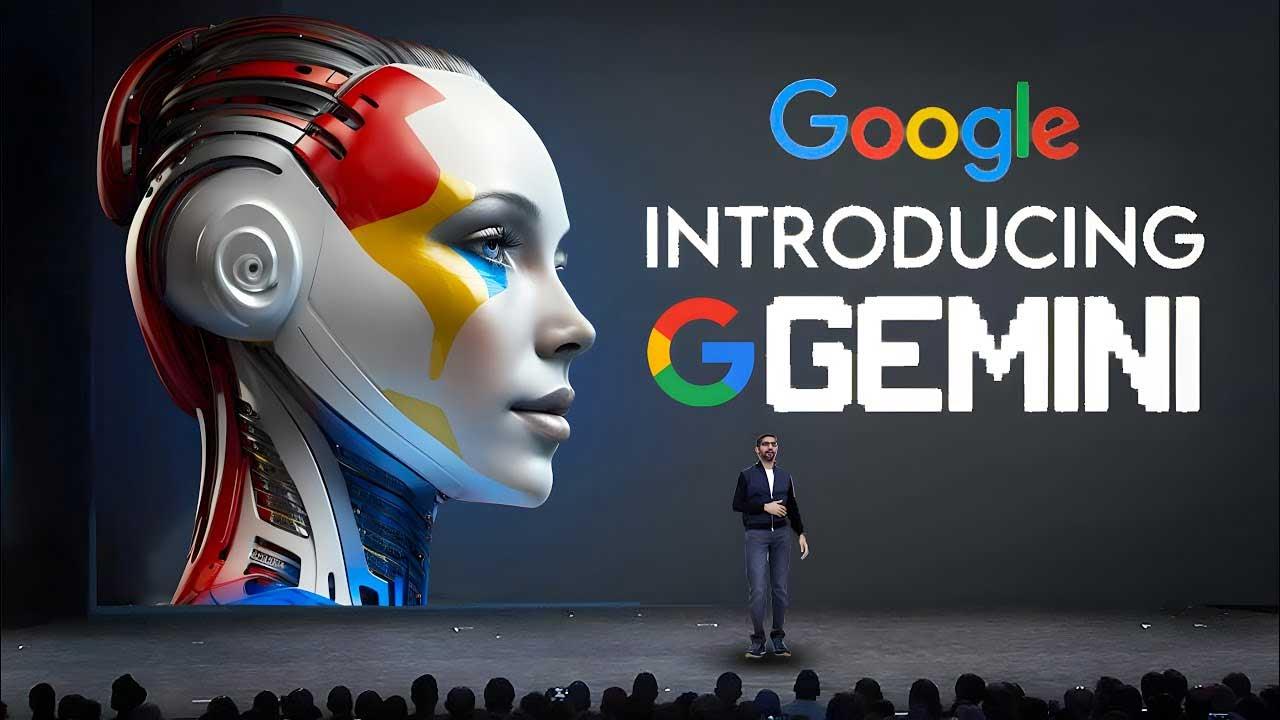
Google Gemini’s impressive capabilities stem from a sophisticated training process. This process, while complex, is crucial to understanding how Gemini learns and evolves. The sheer scale of the data involved, coupled with the advanced techniques employed, sets Gemini apart in the field of artificial intelligence.The training of Gemini is a multi-faceted endeavor, encompassing various data sources and intricate learning algorithms.
Google’s commitment to responsible AI development is reflected in the careful consideration given to the ethical implications of such a powerful model.
Data Sources for Training
Gemini is trained on a vast and diverse dataset. This includes a wide array of text and code, encompassing books, articles, websites, and programming languages. Google also leverages a substantial amount of multimodal data, including images, videos, and audio, to enable Gemini to understand and process information from various formats. The sheer volume of this data is a key factor in Gemini’s ability to perform complex tasks.
Google Gemini’s AI capabilities are fascinating, especially when considering how technology can be used in real-world scenarios. For example, the ongoing Gaza cease-fire negotiations between Russia and NATO, detailed in this recent article gaza cease fire russia nato , might benefit from Gemini’s ability to process vast amounts of data to identify patterns and potential solutions. Ultimately, I’m excited to see how Google Gemini can be deployed to solve complex global challenges.
Training Process and Techniques
Google employs a sophisticated training process for Gemini, integrating a variety of techniques. A critical aspect involves the use of large language models, which are pre-trained on massive datasets. These models form the foundation for Gemini’s learning capabilities. Furthermore, reinforcement learning with human feedback (RLHF) plays a pivotal role. This iterative process fine-tunes Gemini’s responses to align with human preferences and expectations.
Challenges and Ethical Considerations
Developing an AI model of Gemini’s scale presents numerous challenges. One key concern is the potential for bias in the training data. If the data reflects societal biases, the model may perpetuate and even amplify those biases in its responses. Another challenge involves ensuring the safety and reliability of Gemini’s outputs. The model must be carefully monitored to prevent the generation of harmful or misleading information.
Furthermore, the potential misuse of such a powerful tool necessitates careful consideration of the ethical implications and the implementation of appropriate safeguards. Open discussion and collaboration between researchers, developers, and policymakers are crucial in addressing these concerns.
Stages of Gemini’s Development
The development of Gemini is an ongoing process. The following table Artikels some key milestones in its progression:
| Stage | Description |
|---|---|
| Initial Development | Foundation models are created and trained on massive datasets. |
| Iterative Refinement | Models are fine-tuned using reinforcement learning with human feedback (RLHF). |
| Performance Evaluation | Rigorous testing and evaluation to assess accuracy, safety, and alignment with human values. |
| Deployment and Feedback | Gemini is released for public use, and feedback is gathered for further improvement. |
Gemini’s Impact and Future: Google Gemini Artificial Intelligence
Google Gemini, with its advanced capabilities, promises a significant impact across various industries. Its potential to automate tasks, generate creative content, and provide insightful analysis is already sparking excitement and apprehension. This transformative technology holds the key to revolutionizing how we interact with information and technology in the years to come. From streamlining business processes to enhancing personalized experiences, Gemini’s future looks bright, yet its implications warrant careful consideration.The rapid advancement of artificial intelligence necessitates a thoughtful approach to its potential societal effects.
Careful consideration of ethical implications and responsible development are paramount to ensuring Gemini’s benefits are maximized and its risks are minimized. This includes addressing issues like bias in training data and the potential displacement of human labor. While the technology is still in its early stages, the potential for widespread impact is undeniable.
Potential Impact Across Industries
Gemini’s influence spans multiple sectors, from healthcare and finance to education and entertainment. In healthcare, Gemini could assist with diagnosis, treatment planning, and drug discovery. Finance could leverage Gemini for fraud detection, risk assessment, and personalized financial advice. Education could use Gemini to create customized learning experiences, personalized feedback, and to assist teachers with grading and lesson planning.
Entertainment can utilize Gemini to generate creative content, including music, art, and scripts. These are just a few examples of how Gemini could reshape industries and redefine productivity.
Google Gemini’s AI capabilities are fascinating, especially when considering their potential applications. Imagine the speed and precision this technology could bring to complex negotiations like the recent Biden-Israel-Hamas cease fire efforts, analyzing vast amounts of data and identifying key patterns. Ultimately, Gemini’s potential is vast and holds the key to advancements across many fields.
Potential Benefits and Risks
| Potential Benefits | Potential Risks |
|---|---|
| Enhanced productivity and efficiency in various sectors | Job displacement in certain roles as automation increases |
| Improved accuracy and speed in data analysis and decision-making | Potential for misuse, such as the creation of deepfakes or the spread of misinformation |
| Personalized and customized experiences tailored to individual needs | Ethical concerns related to bias in training data and algorithmic fairness |
| Development of innovative solutions to complex problems in healthcare, education, and other fields | Security vulnerabilities and the potential for unauthorized access to sensitive data |
| Creation of new jobs in AI development, implementation, and maintenance | Need for robust regulations and guidelines to govern the use of AI |
Revolutionizing Interaction with Technology
Gemini has the potential to revolutionize how we interact with technology, moving beyond traditional interfaces. Imagine a future where natural language interactions with computers are seamless and intuitive. Gemini’s ability to understand context and intent could lead to more human-centered interfaces, making technology more accessible and user-friendly. This evolution could lead to significant improvements in accessibility for individuals with disabilities.
Future Directions and Advancements, Google gemini artificial intelligence
Future advancements in Gemini are expected to focus on improving its understanding of complex information, enhancing its ability to generate creative content, and refining its reasoning capabilities. These advancements are likely to lead to more sophisticated applications in various fields, driving innovation and transformation across industries. Furthermore, Gemini’s potential for multimodal interaction—combining text, images, and other forms of data—is likely to be a significant area of development.
As Gemini continues to evolve, its impact on the future will undoubtedly be profound.
Comparison with Other AI Models
Google Gemini, a new entrant in the rapidly evolving AI landscape, is being positioned as a powerful competitor to existing large language models (LLMs). Its capabilities are being scrutinized against those of established players like OpenAI’s GPT models, Anthropic’s Claude, and others. This comparison aims to highlight Gemini’s strengths and weaknesses relative to these leading AI models.
Google Gemini’s AI capabilities are fascinating, but sometimes, even the most advanced technology can’t fully grasp the complexities of human emotion. It’s a reminder that while AI might excel at processing vast amounts of data, it still doesn’t quite understand the profound impact of grief, like the experiences discussed in the moving piece “Grief is for people” by Sloane Crosley, grief is for people sloane crosley.
Perhaps future iterations of Gemini will be better equipped to analyze and even simulate such intricate human feelings. Still, it’s important to remember that there are limits to what AI can achieve, and sometimes, the human experience remains uniquely profound.
Performance Metrics Comparison
Gemini’s performance is benchmarked against other prominent AI models through various tasks. These include tasks like question answering, text summarization, code generation, and creative writing. Metrics used to evaluate performance typically include accuracy, fluency, coherence, and relevance. The specific metrics and benchmarks used can vary, so direct comparisons are not always straightforward. Factors like the dataset used for training and the specific prompt design significantly influence the outcome of these comparisons.
Key Feature and Functionality Comparison
Understanding the distinct functionalities of each AI model provides a more comprehensive view of their capabilities. This comparison goes beyond basic performance metrics and delves into the core features and functionalities that distinguish each model.
| Feature | Gemini | GPT-4 | Claude | Other Notable Models |
|---|---|---|---|---|
| Context Window | Large, supporting complex and nuanced tasks. | Large, enabling handling of lengthy texts. | Large, capable of processing considerable context. | Varying sizes, some models excelling in short-term interactions. |
| Multimodal Capabilities | Strong, encompassing text, images, and potentially other data types. | Growing, with integration of image processing capabilities. | Emerging multimodal features. | Limited or nascent multimodal abilities in several systems. |
| Fine-tuning Options | Flexible options available for customized training. | Provides fine-tuning options, allowing tailoring to specific domains. | Provides customization options for tailored performance. | Many offer fine-tuning, catering to specific needs and applications. |
| Safety and Ethical Considerations | Specific measures implemented to address bias and safety concerns. | Actively working on enhancing safety features. | Robust mechanisms to minimize risks. | Varying levels of attention paid to safety and ethics. |
Unique Advantages and Disadvantages
Gemini, like any other AI model, possesses strengths and weaknesses compared to its competitors. Its unique advantages lie in its multimodal capabilities and the potential for tailored training. However, Gemini’s weaknesses might include its relatively recent release, potentially leading to a smaller user base compared to established competitors. The lack of widespread, public datasets for comparison also creates challenges in evaluating Gemini’s performance accurately against its rivals.
The long-term impact and real-world applications of Gemini’s unique features remain to be fully explored.
Specific Examples of Comparison
Consider a scenario involving generating creative content. Gemini’s strength in handling diverse data types could result in more creative and nuanced outputs, especially when combined with image data. GPT-4 might excel in tasks requiring more logical reasoning, such as summarizing complex legal documents. The choice of the most suitable model depends on the specific requirements of the task at hand.
Applications and Use Cases
Gemini’s potential extends far beyond theoretical demonstrations. Its advanced capabilities offer exciting possibilities across various sectors, promising to automate tasks, enhance efficiency, and reshape how we interact with technology. This section delves into specific use cases and the transformative impact Gemini can have in the real world.
Gemini in Healthcare
Gemini can revolutionize healthcare by automating administrative tasks, assisting with patient diagnosis, and personalizing treatment plans. For instance, Gemini can process medical records, schedule appointments, and generate reports with unprecedented speed and accuracy. This frees up valuable time for healthcare professionals to focus on patient care. Furthermore, Gemini can analyze patient data to identify patterns and potential risks, aiding in early detection and preventative measures.
Personalized treatment plans can be generated based on individual patient needs, potentially leading to improved outcomes.
Gemini in Finance
In the financial sector, Gemini can automate tasks like fraud detection, risk assessment, and customer service. Gemini can analyze vast amounts of financial data to identify anomalies and potential fraudulent activities in real-time. By analyzing market trends and historical data, Gemini can provide valuable insights for investment strategies and risk management. Further, Gemini can provide personalized financial advice and manage portfolios based on individual investor needs.
Gemini in Education
Gemini’s capabilities in education are vast. It can personalize learning experiences for students by tailoring lessons to individual needs and providing customized feedback. Gemini can create interactive exercises and simulations, making learning more engaging and effective. Moreover, Gemini can assist teachers by grading assignments, creating lesson plans, and providing support for students with diverse learning styles. Imagine Gemini providing personalized tutoring sessions, adapting to each student’s pace and understanding.
Gemini’s Automation Potential
Gemini’s ability to automate tasks across various industries holds immense potential. By automating repetitive tasks, Gemini can free up human workers to focus on more strategic and creative endeavors. This increased efficiency can lead to significant cost savings and improved productivity. Furthermore, the automation of tasks reduces the risk of human error, leading to greater accuracy and consistency.
Real-World Examples of Gemini’s Applications
Numerous examples showcase Gemini’s practical application in diverse settings. A hospital could use Gemini to streamline patient intake processes, reducing wait times and improving patient satisfaction. A financial institution could leverage Gemini to detect fraudulent transactions in real-time, minimizing financial losses. A school district could use Gemini to personalize learning materials for each student, enhancing educational outcomes.
Potential Use Cases Across Industries
| Industry | Potential Use Case ||—————–|———————————————————————————————————————————————————————————————|| Healthcare | Automating administrative tasks, assisting with diagnosis, generating personalized treatment plans, analyzing patient data for early detection || Finance | Automating fraud detection, risk assessment, customer service, providing personalized financial advice, managing portfolios, analyzing market trends || Education | Personalizing learning experiences, creating interactive exercises, grading assignments, providing support for students with diverse learning styles, creating lesson plans || Customer Service | Automating responses to common inquiries, providing personalized support, resolving issues efficiently, improving customer satisfaction || Retail | Personalizing recommendations, automating inventory management, improving customer experience, optimizing pricing strategies, providing real-time data analysis for product decisions |
Ethical Implications and Societal Impact
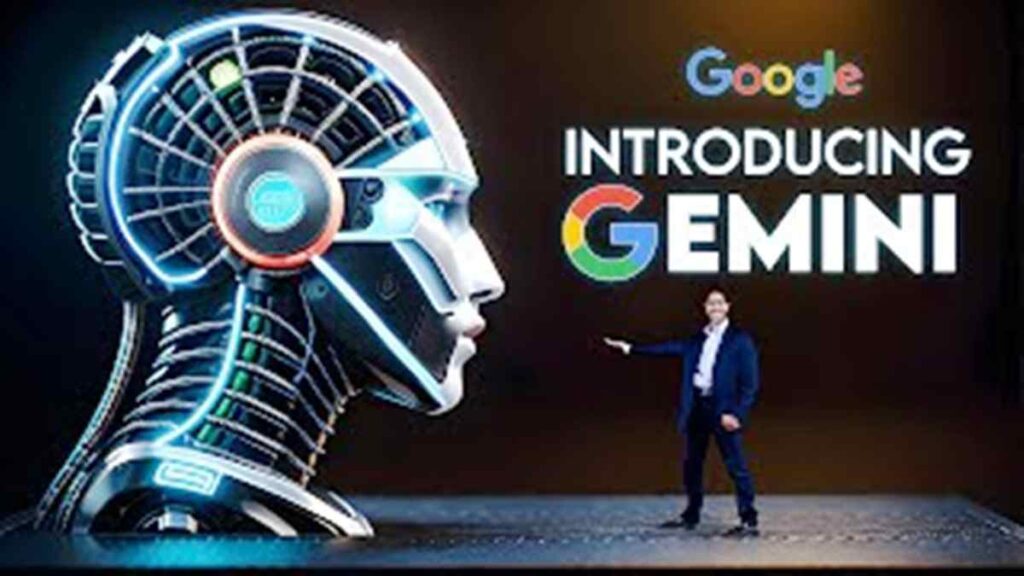
Google Gemini, with its advanced capabilities, presents a range of ethical considerations that demand careful attention. As with any powerful technology, responsible deployment and mitigation of potential harms are crucial. The potential for bias, misuse, and societal disruption necessitates a proactive approach to ensure its benefits are maximized while its risks are minimized. This section explores the ethical challenges and societal implications of widespread Gemini adoption.
Bias and Fairness Concerns
The training data used to develop AI models like Gemini can reflect existing societal biases. These biases can manifest in the model’s outputs, leading to unfair or discriminatory outcomes. For example, if the training data disproportionately features a specific gender or ethnicity in a particular role, the model might perpetuate those stereotypes in its responses. Careful curation and monitoring of training data are crucial to minimize these biases and ensure fairness.
This necessitates diverse and representative datasets, along with robust evaluation procedures.
Misinformation and Manipulation
Gemini’s ability to generate human-like text raises concerns about the potential for misinformation and manipulation. Malicious actors could use Gemini to create convincing but false information, potentially undermining trust in legitimate sources and influencing public opinion. This necessitates the development of robust fact-checking tools and mechanisms to combat the spread of misinformation. Educational initiatives to help users critically evaluate information generated by AI are also essential.
Job Displacement and Economic Impact
The widespread adoption of Gemini, and other AI tools, could lead to job displacement in various sectors. Automation of tasks currently performed by humans raises concerns about economic inequality and the need for workforce retraining. Strategies to mitigate these impacts include investing in education and training programs to equip workers with skills relevant to the changing job market.
Additionally, exploring new economic models and social safety nets is crucial to address the potential disruption caused by widespread automation.
Privacy and Data Security
Gemini’s functionality relies on vast amounts of data. Protecting user privacy and ensuring the security of this data is paramount. Strict adherence to data privacy regulations and the development of robust security measures are essential to prevent misuse or unauthorized access. This includes transparent data handling policies and user control over their data.
Google Gemini’s AI capabilities are fascinating, but recent events like the tragic NYC shooting on the D train highlight the urgent need for responsible technology development. How can AI be used to prevent such incidents? It’s a complex question, and while Gemini’s potential for good is huge, we need to consider its implications for public safety. This recent tragedy serves as a stark reminder of the need for careful consideration in how AI is deployed and used.
The potential of Google Gemini to address such issues is significant.
Table: Potential Ethical Concerns and Mitigation Strategies
| Ethical Concern | Mitigation Strategy |
|---|---|
| Bias and unfairness | Diverse and representative training data, rigorous evaluation procedures, ongoing bias detection and mitigation |
| Misinformation and manipulation | Fact-checking tools, user education on AI-generated content, clear labeling of AI-generated outputs |
| Job displacement | Investment in workforce retraining, development of new economic models, social safety nets |
| Privacy and data security | Adherence to data privacy regulations, robust security measures, transparent data handling policies |
Technical Specifications and Architecture
Google Gemini’s architecture is a complex system built on a foundation of advanced machine learning models. Understanding its technical specifications is crucial to appreciating the scale and sophistication of this large language model. Gemini’s design allows for adaptable and scalable performance across a wide range of tasks, distinguishing it from previous generations of AI.Gemini leverages a layered approach, combining different models and techniques to achieve its diverse capabilities.
This modularity allows for fine-tuning and specialization of various components, resulting in improved performance across different tasks. The core architecture relies on transformer-based models, which excel at understanding and generating text, but Gemini also incorporates other techniques for specific tasks.
Model Components and Interactions
Gemini’s architecture isn’t a monolithic structure but a collection of interconnected components. Each component plays a specific role, contributing to the overall functionality. These components interact dynamically to process information and generate outputs. The core components interact in a complex manner, enabling sophisticated tasks like question answering and creative text generation. This interaction is managed through a sophisticated pipeline, optimized for efficient processing and output generation.
Algorithms and Models
Gemini employs a combination of state-of-the-art algorithms and models. The core of Gemini is based on transformer networks, which excel at processing sequential data like text. These networks learn intricate relationships between words and phrases, enabling sophisticated language understanding. Beyond transformers, Gemini utilizes other algorithms and models, such as those specialized for tasks like image recognition and audio processing.
Layered Architecture
Gemini’s architecture can be visualized as a layered system, each layer contributing to the overall functionality. This modular approach enables efficient handling of complex tasks and allows for targeted enhancements to specific areas. Each layer interacts with others in a structured manner, ensuring the smooth flow of information and effective generation of outputs. This layered approach is critical for the efficient processing of data and tasks.
| Layer | Description |
|---|---|
| Foundation Layer | Basic transformer-based language model. Learns fundamental patterns in text data. |
| Specialized Layers | Models tailored for specific tasks (e.g., image understanding, audio processing). |
| Inference Layer | Orchestrates the interaction between different layers, processing user requests and generating outputs. |
Final Thoughts
In conclusion, Google Gemini artificial intelligence represents a significant advancement in the field of AI. Its potential applications are vast, promising to transform industries and enhance our daily lives. While challenges and ethical considerations remain, Gemini’s potential to revolutionize how we interact with technology is undeniable. The future of AI looks bright, and Gemini is at the forefront.
Detailed FAQs
What are some potential ethical concerns surrounding Gemini?
Potential biases in the training data could lead to unfair or discriminatory outcomes. Careful consideration of these issues and the development of mitigation strategies are crucial for responsible deployment.
How does Gemini compare to other large language models?
Gemini’s unique architecture and training approach set it apart. Comparisons with other models are complex, as strengths and weaknesses vary based on specific tasks and evaluation criteria.
What industries are most likely to benefit from Gemini?
Healthcare, finance, and education are among the sectors that stand to gain the most from Gemini’s capabilities, due to its potential to automate tasks, analyze data, and personalize experiences.
What is the specific architecture of Gemini?
Details on the exact architecture are not publicly available, but the general approach involves a complex network of interconnected modules optimized for various tasks.


